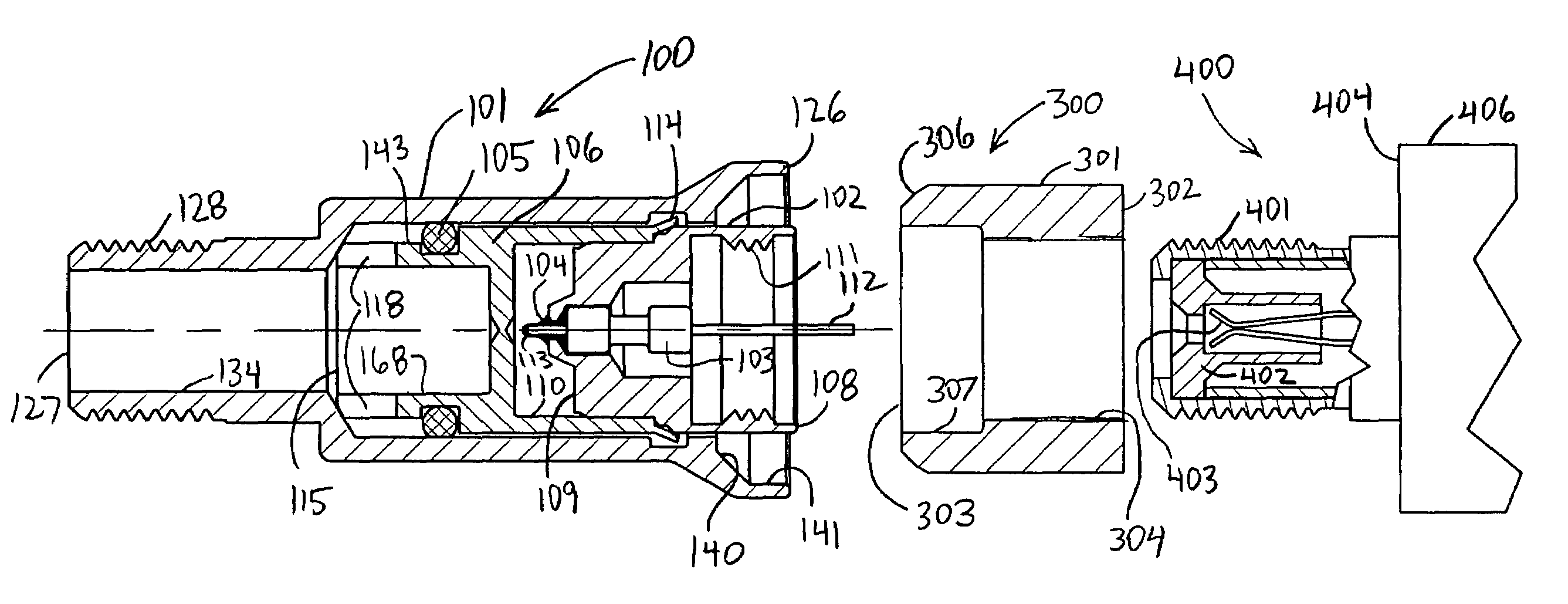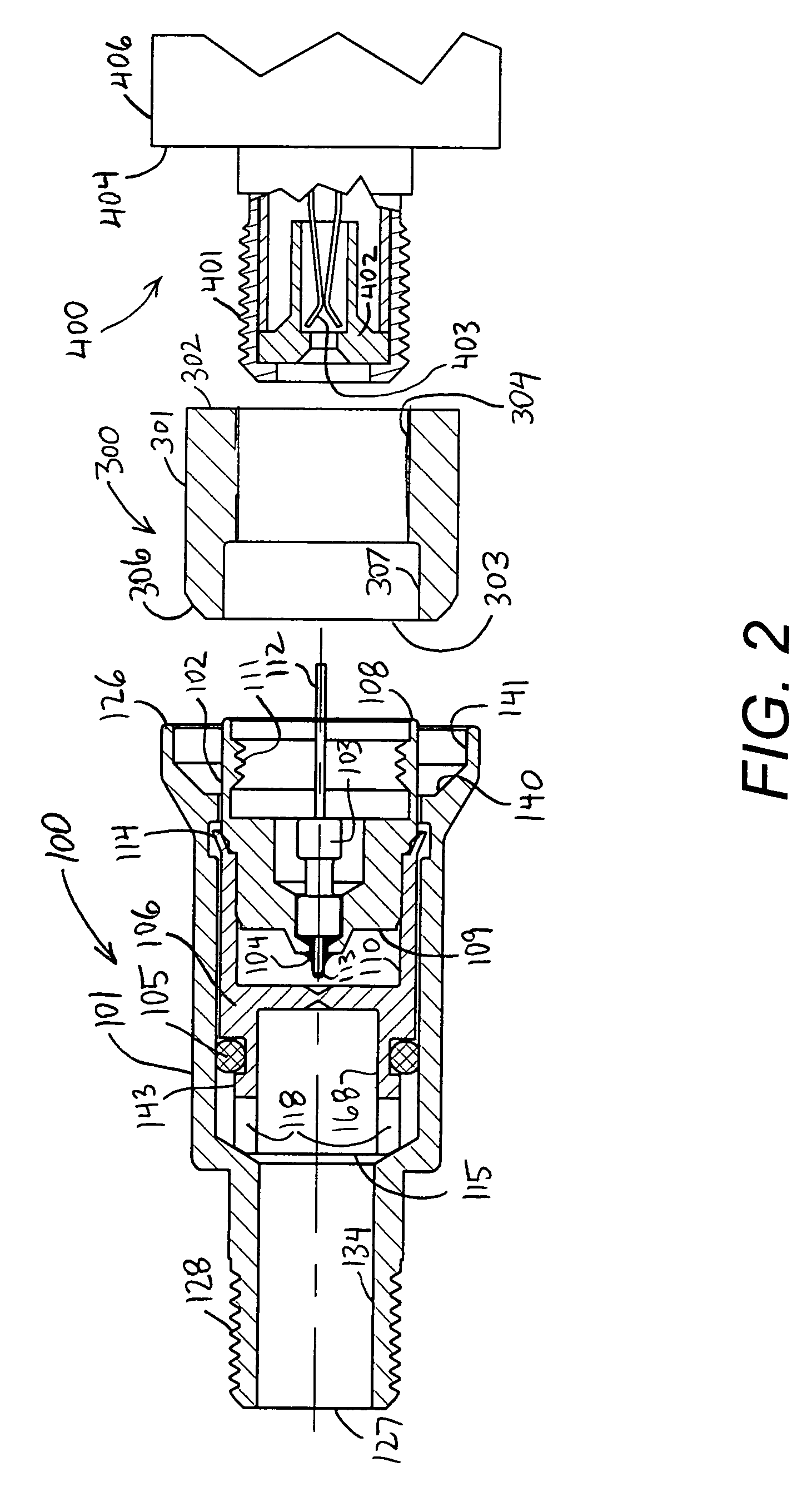Sealed tamper resistant terminator
a terminator and seal technology, applied in the direction of coupling device details, coupling device connection, securing/insulating coupling contact members, etc., can solve the problems of corrosion of the internal components of the terminator, unauthorized removal of the terminator without the need for special tools, and the end of the equipment box being often exposed to the elements
- Summary
- Abstract
- Description
- Claims
- Application Information
AI Technical Summary
Benefits of technology
Problems solved by technology
Method used
Image
Examples
Embodiment Construction
[0043]FIG. 1 illustrates a tamper resistant coaxial terminator for securing and terminating a coaxial equipment port of an equipment box, and constructed in accordance with a first embodiment of the present invention, along with a pair of end caps. The tamper resistant coaxial terminator 100 comprises an outer shield 101, an internally-threaded RF port 102, resistor 103, o-ring 105, inner body 106, and first and second seal plugs, or end caps, 107A and 107B. RF port 102 is made of electrically-conductive material, such as tin-plated brass, and extends between first and second opposing ends 108 and 109, respectively. First end 108 of RF port 102 has an inner surface defining a central bore 190 including an internally threaded region 111 for mating with the threads formed upon the outer conductor of a typical coaxial female equipment port, via rotation of RF port 102 relative to such equipment port.
[0044]Resistor 103 is housed within the central bore 190 of RF port 102 and extends bet...
PUM
 Login to View More
Login to View More Abstract
Description
Claims
Application Information
 Login to View More
Login to View More - R&D
- Intellectual Property
- Life Sciences
- Materials
- Tech Scout
- Unparalleled Data Quality
- Higher Quality Content
- 60% Fewer Hallucinations
Browse by: Latest US Patents, China's latest patents, Technical Efficacy Thesaurus, Application Domain, Technology Topic, Popular Technical Reports.
© 2025 PatSnap. All rights reserved.Legal|Privacy policy|Modern Slavery Act Transparency Statement|Sitemap|About US| Contact US: help@patsnap.com



